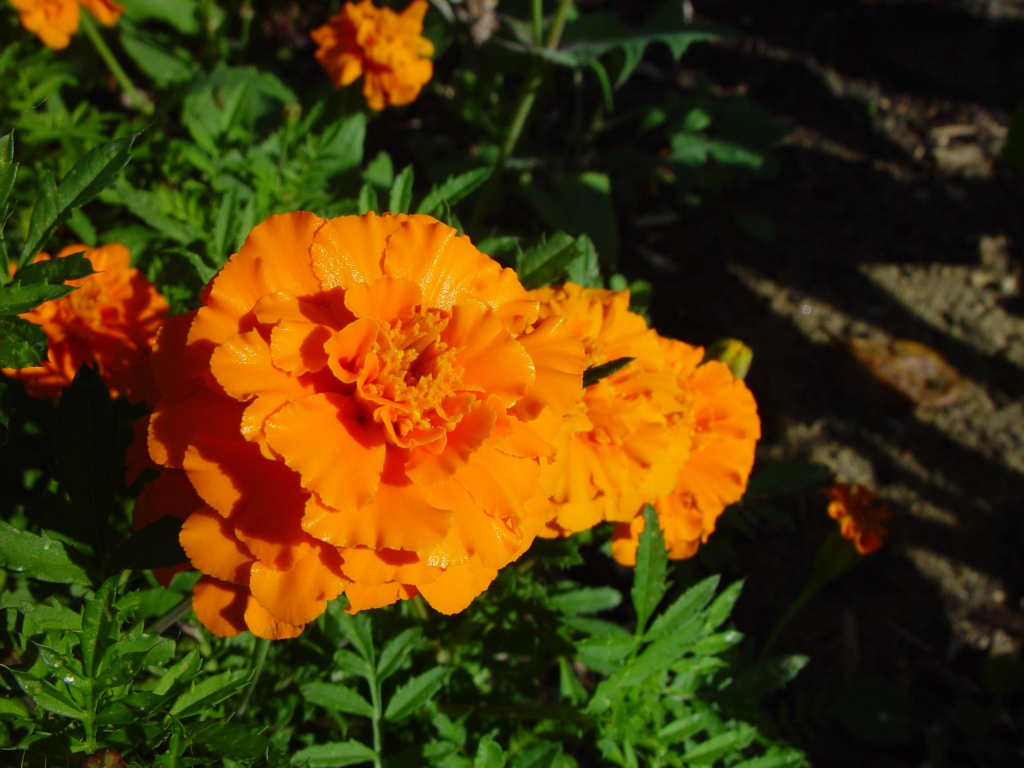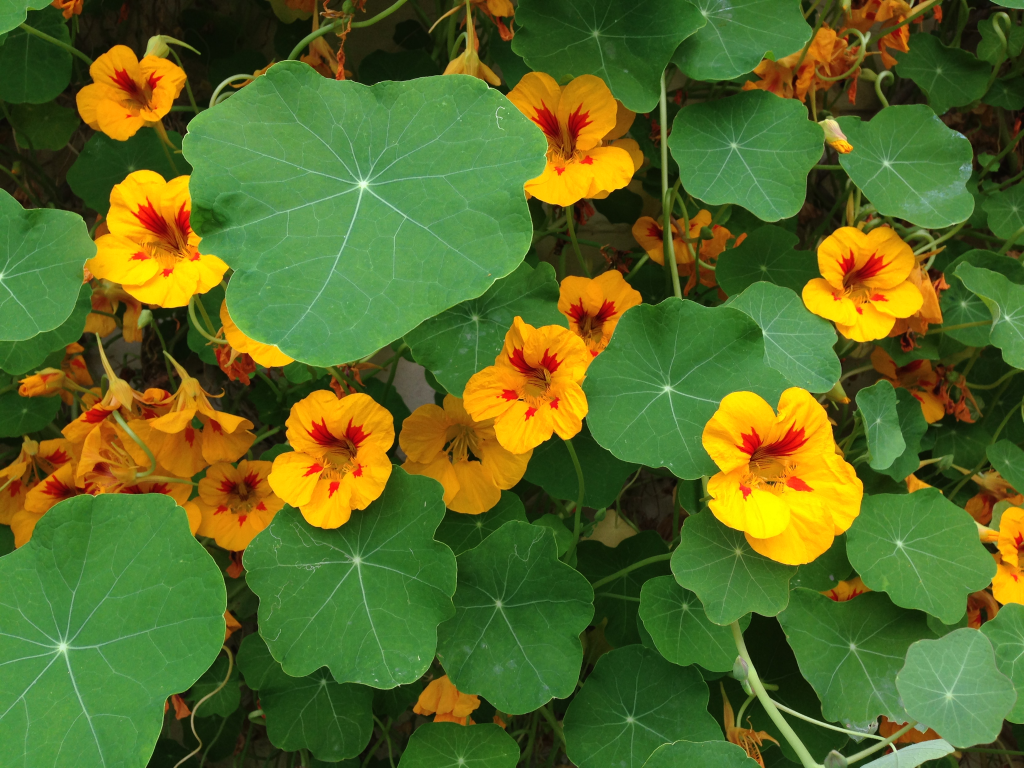Companion planting is an age-old gardening technique used by generations of gardeners to improve the health and productivity of their plants. The concept behind it is simple yet ingenious.
The idea is to place plants with complementary characteristics close together, fostering a symbiotic relationship that benefits both parties involved.
Some plants emit natural substances that deter pests; others offer shade, support, or nutrients that are vital for their neighbors’ survival. When these plants are grown in close proximity, they effectively protect and nurture one another, leading to a vibrant, healthy garden teeming with life.
Choosing the right companion plants is crucial to harnessing the power of beneficial bugs. You should select species that will entice these insects and encourage them to make your garden their home.
With the right mix of companion plants, you’ll create a thriving ecosystem where these beneficial insects can flourish, keeping your garden healthy and pest-free.
Let’s explore some popular companion plants that will help you attract helpful insects and put them to work in your garden.
Marigolds (Tagetes spp.)

Marigolds are a gardener’s best friend when it comes to attracting beneficial insects. Their bright orange and yellow flowers are not only beautiful but also act as a beacon for ladybugs, lacewings, and other predatory insects.
These insects feast on common garden pests like aphids and whiteflies, keeping your plants healthy and happy. As they enjoy their meal, they simultaneously protect your garden from unwanted intruders.
Thus, marigolds become a natural pest control system, safeguarding your plants from harm and ensuring they continue to thrive.
In addition to their pest control benefits, marigolds exude a strong scent that deters harmful nematodes from attacking the roots of your plants.
If you want to harness the power of marigolds, strategically place them throughout your garden.
We encourage you to create borders with these lovely flowers or intermingle them amongst other plants for maximum protection. Doing so, you will add a splash of color while inviting an army of helpful insects to defend your beloved plants.
Yarrow (Achillea millefolium)

Yarrow is a versatile perennial plant that is both beautiful and functional in the garden. With its intricate clusters of petite flowers, it can add a touch of elegance to every outdoor space.
Yarrow is a versatile perennial plant that is both beautiful and functional in the garden. Its intricate clusters of petite flowers can add a touch of elegance to every outdoor space.
However, it also serves another vital function — it is an irresistible nectar source for hoverflies, which prey on aphids and other soft-bodied pests. These beneficial insects are drawn to yarrow like a magnet, diligently hunting down and feasting on pesky intruders that can wreak havoc on your prized plants.
The presence of yarrow in your garden ensures that hoverflies will always be close at hand, keeping unwanted pests at bay while adding an air of enchantment to your landscape.
Yarrow is also known for its ability to improve soil quality by accumulating nutrients from deep in the ground and making them available to nearby plants. This quality makes it an excellent companion plant for nutrient-hungry vegetables like tomatoesand peppers.
Incorporating yarrow into your garden enhances its aesthetic appeal and creates a harmonious ecosystem where plants can thrive. Partnering yarrow with your favorite vegetables ensures they receive the vital nutrients they need to flourish while inviting helpful hoverflies to maintain a pest-free environment.
Fennel (Foeniculum vulgare)

Fennel’s feathery foliage and sweet aroma make it an attractive addition to any garden. But it’s not just for looks — fennel is a powerful ally when it comes to attracting beneficial insects. Gardeners and nature enthusiasts alike have come to appreciate this plant’s dual role as an ornamental and functional presence in their green havens.
One of fennel’s most impressive attributes is its ability to attract parasitic wasps. These tiny warriors are drawn to the plant’s alluring scent and delicate fronds, making them frequent visitors to your garden.
Once they arrive, these wasps demonstrate their gratitude by laying their eggs inside common garden foes, such as caterpillars and aphids. As the wasp larvae develop, they consume their host from within, effectively controlling the pest population without the need for harmful pesticides.
To make the most of fennel’s pest-repellent properties, plant it alongside vegetables like cucumbers and lettuce. The proximity of these plants allows for enhanced protection against hungry invaders, fostering healthier and more bountiful harvests.
However, exercise caution when planning your garden layout, as fennel can be somewhat particular about its neighbors. Avoid planting it too close to tomatoes or beans, as it may inhibit their growth and negatively impact your overall yield.
Dill (Anethum graveolens)

Dill is another aromatic herb that does double duty in the garden, providing both culinary uses and pest protection. This versatile plant shares similarities with fennel as they both have a penchant for attracting parasitic wasps — the bane of common garden invaders.
But that’s not all! Dill’s allure doesn’t stop there; it also serves as a magnet for ladybugs and lacewings. These beneficial insects are renowned for their voracious appetite for aphids and mites, making them valuable allies in the battle against destructive pests.
At the same time, strategically planting dill near your brassicas, such as cabbage and kale, can significantly deter pests like cabbage worms. These unsightly creatures are notorious for wreaking havoc on the unsuspecting leaves of your precious plants.
By placing dill nearby, you’re effectively enlisting an army of defenders to keep these pesky intruders at bay. The vibrant aroma emitted by the dill disguises the scent of your plants, leaving the cabbage worms disoriented and unable to locate their desired meal.
Still, it’s crucial to remember that not all plants share a harmonious relationship with dill. Carrots, in particular, can suffer if planted too close to this potent herb. A fierce competition for nutrients ensues between these two plant species, preventing them from reaching their full potential.
To ensure the prosperity of both your dill and carrots, make sure to maintain a respectful distance between them when planning your garden layout.
Nasturtiums (Tropaeolum majus)

Nasturtiums: a name that rolls off the tongue, evoking images of vibrant, cheerful blossoms. But there’s more to these beautiful plants than meets the eye — their vibrant flowers attract a variety of beneficial insects (such as hoverflies and ladybugs) while repelling some of the more destructive pests like aphids and squash bugs.
In this way, nasturtiums serve as both a beautiful addition to any garden and an essential line of defense against unwanted intruders.
These easy-to-grow annuals are perfect for planting around your vegetable garden or in containers on your patio.
As a bonus, nasturtium flowers and leaves are edible and make a colorful addition to salads. Their peppery taste adds a delightful kick, transforming ordinary greens into something extraordinary. The bright colors of the petals make them an eye-catching garnish, sure to impress dinner guests and elevate any dish.
Final Thoughts
Now you know which plants to choose for your outdoor space!
Marigolds are known for their ability to ward off nematodes and other pests while attracting hoverflies and ladybugs. On the other hand, planting yarrow alongside tomatoes provides them with necessary nutrients.
Even something as simple as allowing a few nasturtiums to grow in your yard can provide essential food sources for bees and other pollinators.
Companion planting with these beneficial insect-attracting plants is a practical, organic way to manage pests in your garden. By creating a healthy ecosystem that supports the natural predators of common pests, you’ll enjoy a thriving garden with less effort and fewer chemicals.
Was it helpful?

Enamored with the world of golf Jack pursued a degree in Golf Course Management at THE Ohio State University. This career path allowed him to work on some of the highest profile golf courses in the country! Due to the pandemic, Jack began Inside The Yard as a side hustle that quickly became his main hustle. Since starting the company, Jack has relocated to a homestead in Central Arkansas where he and his wife raise cattle and two little girls.

